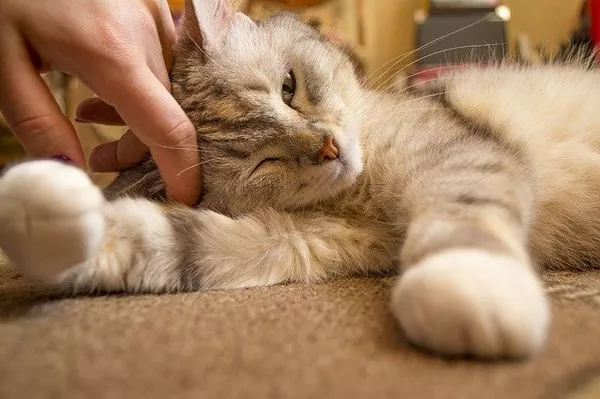The Shar-Pei, an ancient breed known for its distinctive appearance and unique temperament, often prompts curiosity and admiration. Originating in China, these dogs were historically bred for hunting, herding, and guarding. The breed’s name, “Shar-Pei,” translates to “sand skin” in reference to their bristly coat. Despite their somewhat odd looks, Shar-Peis possess a powerful presence and a robust build that can be quite imposing.
Physical Strength and Stature
Appearance
The Shar-Pei’s appearance is unmistakable. One of the breed’s most defining features is its deeply wrinkled skin, which was originally an adaptation for its role as a fighting dog; the loose skin and prickly coat made it difficult for opponents to grab hold. These wrinkles are most prominent on the head, neck, and shoulders, giving the Shar-Pei a perpetually frowning expression that many find endearing.
The breed’s head is often described as hippopotamus-shaped due to its broad, flat skull and wide, blunt muzzle. This distinctive head shape is complemented by small, sunken eyes that convey an alert and thoughtful expression. The ears are small, thick, and triangular, lying flat against the head, adding to the breed’s unique look.
Shar-Peis have a sturdy, muscular build that contributes to their overall power. Despite their medium size, typically weighing between 40 to 65 pounds and standing 18 to 20 inches tall at the shoulder, they have a strong, compact body that exudes strength. Their limbs are well-muscled, providing the breed with both the agility and power needed for their historical roles.
Confident and Dignified Demeanor
Shar-Peis carry themselves with a dignified and confident air. They move with a deliberate, measured gait, reflecting their calm and self-assured nature. This breed is not one to be overly excitable or fidgety; instead, they exhibit a composed and stately presence. Their reserved demeanor adds to their air of quiet strength and authority.
Temperament and Behavior
Quiet and Mannerly Nature
In the home, Shar-Peis are known for their quiet and mannerly behavior. They are not typically barkers, preferring to observe their surroundings in silence. This makes them excellent companions for those who appreciate a more peaceful living environment. Their calm disposition is often a surprise to those who are unfamiliar with the breed, given their somewhat fierce appearance.
Shar-Peis are generally reserved with strangers, showing their affection and loyalty primarily to their family members. This reserved nature can be mistaken for aloofness, but it is simply a reflection of their discerning character. They are incredibly loyal to their families and form strong bonds with their owners, often following them from room to room to stay close.
Independence and Confidence
Shar-Peis are known for their independence, a trait that requires a confident and experienced owner. They can be quite stubborn and may attempt to assert their dominance if they perceive weakness or inconsistency in their handler. This breed thrives under firm, consistent leadership and responds well to training that is both respectful and assertive.
Because of their independent nature, Shar-Peis are not typically clingy or overly dependent on their owners for constant attention. They are content to spend time alone, making them suitable for owners who work outside the home. However, this independence should not be mistaken for a lack of affection. Shar-Peis are deeply loyal and protective of their families.
Territorial Instincts and Aloofness with Strangers
Shar-Peis possess strong territorial instincts, making them excellent watchdogs. They are naturally suspicious of strangers and will often position themselves between their family and an unknown person until they are satisfied that there is no threat. This protective nature, while a valuable trait, requires careful management to prevent unnecessary aggression.
Their aloofness with strangers is not limited to people; it can extend to other animals as well. Shar-Peis can be territorial and may not readily accept new pets into their home. Early socialization is crucial to ensure they learn to coexist peacefully with other animals. Without proper socialization, Shar-Peis may exhibit aggression toward other dogs or animals, particularly those they perceive as intruding on their territory.
Potential Aggression
While Shar-Peis are typically calm and well-mannered, they do have the potential for aggression if not properly trained and socialized. Their strong protective instincts can lead them to become overzealous in defending their home and family. It is essential for owners to establish themselves as the pack leader and to provide consistent, positive training to curb any aggressive tendencies.
Early socialization and exposure to a variety of people, places, and experiences are key to developing a well-rounded Shar-Pei. Puppy classes and regular social interactions can help them learn appropriate behaviors and reduce the likelihood of aggression as they mature. Owners should be mindful of the breed’s history and inherent traits, ensuring they provide an environment that encourages calm and controlled behavior.
Exercise Requirements
Moderate Exercise Needs
Despite their powerful build and history as working dogs, Shar-Peis have moderate exercise requirements. They enjoy daily walks and playtime but do not require excessive physical activity to remain healthy and happy. A couple of brisk walks each day, coupled with some playtime in a secure yard or home environment, is typically sufficient to meet their exercise needs.
Shar-Peis can be quite content with a moderate exercise routine, making them well-suited for city or suburban living. They do not have the high energy levels of some other breeds and are generally happy to relax indoors with their family. However, regular exercise is important to prevent boredom and to maintain their physical health.
Suitability for Different Living Environments
The Shar-Pei’s moderate exercise needs and calm demeanor make them adaptable to various living environments. They can thrive in apartments, provided they receive daily walks and have a comfortable space to call their own. Their quiet nature is a boon for apartment living, as they are unlikely to disturb neighbors with excessive barking.
See Also: What is the Downside of Shar-Pei?
In suburban homes, Shar-Peis enjoy the additional space and often take pleasure in exploring a secure backyard. It is important to ensure that the yard is well-fenced, as Shar-Peis can be prone to wandering if they catch an interesting scent or see something worth chasing.
Caution in Rural Areas
While Shar-Peis can adapt to rural living, there are certain precautions that owners should take. Due to their hunting instincts, Shar-Peis should not be allowed to roam freely in rural areas. Their natural inclination to chase small animals can lead them into dangerous situations, such as encounters with wildlife or getting lost.
Owners in rural areas should ensure that their Shar-Peis are always supervised or securely contained when outdoors. Leash walks and a fenced yard are essential to keep them safe and to prevent them from acting on their hunting instincts.
Conclusion
Is the Shar Pei powerful? The answer is yes. The Shar-Pei is a breed of quiet power and dignified presence. Their unique appearance, characterized by deeply wrinkled skin and a hippopotamus-shaped head, sets them apart from other breeds. Beneath this distinctive exterior lies a dog of considerable strength and confidence. Their calm and mannerly nature at home, combined with their independence and strong territorial instincts, makes them both a loyal companion and a formidable guardian.
Shar-Peis require a confident and experienced owner who can provide firm, consistent leadership. Early socialization and training are crucial to ensure they develop into well-rounded and controlled adults. While they have moderate exercise needs, they still require regular physical activity and mental stimulation to remain healthy and content.
In the right environment and with proper care, Shar-Peis can thrive in city, suburban, or rural settings, though caution is needed in the latter due to their hunting instincts. Their powerful build and strong-willed nature make them a breed that commands respect and admiration. For those who appreciate their unique qualities and are prepared to meet their needs, the Shar-Pei can be a deeply rewarding and loyal companion.
Related Topics:


























